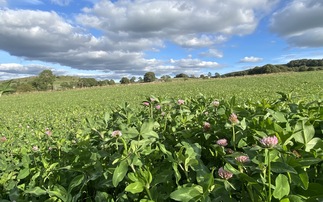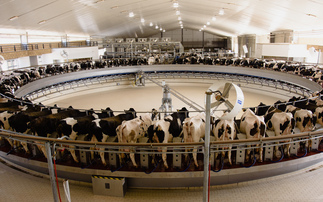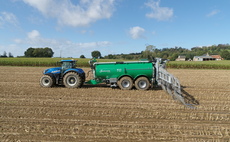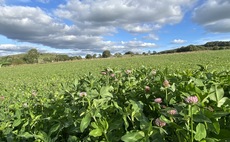
Liz Hains
Tenant dairy farmer Liz Haines discusses the impact that cost of production is having on her business and how she expects to ride out the storm
Despite the fact that we are well past the spring peak of milk production, milk prices have continued to tumble. It is frustrating that supermarkets have returned to their price wars so quickly, with milk now retailing at 1.55p for four pints at most retailers - even Marks & Spencer.
During the pandemic there was a sense that, amidst the fear of food shortages, people were beginning to value staples like milk and were happy to pay more, but with the cost of living crisis really biting now, every penny counts.
For the last few weeks, food price inflation has been all over the media, with newspapers clamouring to report the 9% increase in May - even though dairy prices actually fell 15.1% according to the British Retail Consortium. I can't help but feel that someone in the Government has done a blinding PR job of distracting from the real causes of the cost of living crisis; the hike in interest rates which has caused some people's monthly mortgage payments to double.
In our business, the milk price has fallen by over 25% since Christmas, which is unprecedented in my decade of farming and has put real pressure on us. However, I do have to remind myself that the price rises last year were also unprecedented, and, despite the challenges with the drought and fertiliser prices, it was financially a good year for us and many others.
During April and May, on the back of the wet spring, we managed to get by on grass alone, and the resulting absence of feed bills was very welcome. But now, with no rain on the farm for a few weeks, the deliveries have started up again - just as I had finished paying off the finance payments on last year's fertiliser.
With the unfortunate bombing of the dam in Ukraine, we were concerned that today's comparatively low prices could be driven up again and decided to buy another load as an insurance policy. Only time will tell whether this will be the right decision or not.
Milk price
At the start of the year, I had hoped the milk price cuts would be short-lived, with indications that the market would rise again in the second half of the year as China used up its milk powder stocks and consumer demand improved as the economy recovered. But so far, any improvements have been slow to gain momentum.
While the continuing dry spell is unwelcome from a farming perspective, the only thing we can hope is that it will keep a lid on milk volumes and create some positive pressure within the market.
The other way to create pressure within the market is to export; something Rishi Sunak recognised in his glossy ‘Farm to Fork Summit' with the announcement of a £1 million fund to boost British dairy exports. But unfortunately, I can't help but think that by the time the civil servants actually work out a way to deliver this money where it is needed, the current crisis will have abated and we will be dealing with a new set of challenges - and potentially even a new Government.
Irish cull
I also keep reminding myself that, despite the current squeeze, the longer-term prospects for dairy are good. The global population continues to grow along with demand for dairy. The sad irony of Ireland committing €600m (£514m) to cull 200,000 dairy cows after spending the last decade growing its dairy industry into a small but mighty exporting success story is not lost on me, but perhaps creates a vacuum British dairy farmers could fill - if our own Government doesn't go down the same path.
As always, the only thing we can do on the farm is control our costs as much as possible and get the basics right. This won't be the year for experimenting or investing in new technology. We will just batten down the hatches and wait for the tide to change.




























